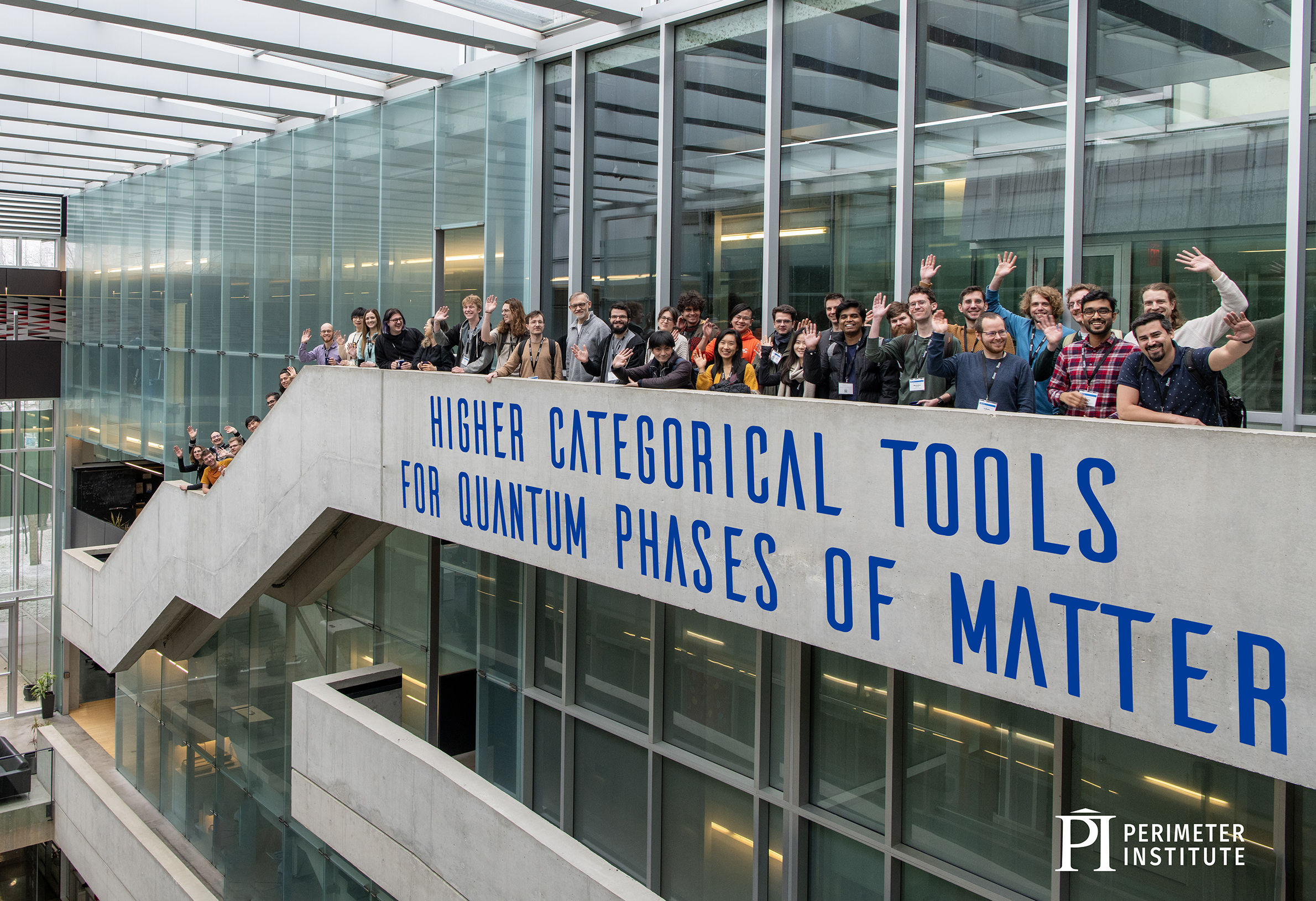Format results
-
Talk
-
Opening Remarks
-
Sonya Gzyl Max Planck Institute of Quantum Optics
-
Timothy Hsieh Perimeter Institute for Theoretical Physics
-
-
-
-
Towards large-scale quantum simulations with trapped ions - Rajibul Islam
Kazi-Rajibul Islam Institute for Quantum Computing (IQC)
-
-
-
-
-
-
Talk
-
-
Tutorial: Causal Inference Meets Quantum Physics
Robert Spekkens Perimeter Institute for Theoretical Physics
-
Counterfactual and Graphical Frameworks for Causal Modeling
Thomas Richardson University of Washington
-
-
Relating Wigner's Friend Scenarios to Nonclassical Causal Compatibility, Monogamy Relations, and Fine Tuning
Yìlè Yīng Perimeter Institute for Theoretical Physics
-
Modeling Latent Selection with Structural Causal Models
Leihao Chen University of Amsterdam, Korteweg-de Vries Institute for Mathematics
-
Zero Inflation as a Missing Data Problem: a Proxy-based Approach
Trung Phung Johns Hopkins Whiting School of Engineering
-
-
-
Talk
-
Everything that can be learned about a causal structure with latent variables by observational and interventional probing schemes
Marina Maciel Ansanelli Perimeter Institute for Theoretical Physics
PIRSA:24090191 -
-
-
Channel Expressivity Measures
Matthew Duschenes Perimeter Institute for Theoretical Physics
PIRSA:24090201 -
The g-function and defect changing operators from wavefunction overlap on a fuzzy sphere
Zheng Zhou Perimeter Institute for Theoretical Physics
PIRSA:24090190 -
Open Quantum On Lie Group: An Effective Field Theory Approach
Afshin Besharat University of Alberta
PIRSA:24090192 -
Photon Rings and Shadow Size for General Integrable Spacetimes
Kiana Salehi perimeter institute and university of Waterloo
PIRSA:24090193 -
-
-
Talk
-
Lecture - Celestial Holography Ia
PIRSA:24070002 -
Lecture - Canonical a
PIRSA:24070003 -
Lecture - Celestial Holography Ib
PIRSA:24070004 -
Lecture - Amplitudes a
PIRSA:24070005 -
Vision Talk
PIRSA:24070006 -
Lecture - Celestial Holography IIa
PIRSA:24070007 -
Lecture - Canonical b
PIRSA:24070008 -
Lecture - Celestial Holography IIb
PIRSA:24070009
-
-
Talk
-
-
-
Horndeski Gravity in Cosmology
Alessandra Silvestri Leiden University
-
How we rediscovered Horndeski gravity
Cedric Deffayet Institut d'Astrophysique de Paris
-
Black holes in Horndeski theories
Christos Charmousis The French National Centre for Scientific Research
-
Hi-COLA: Horndeski Goes Non-linear
Tessa Baker University of Portsmouth
-
Photon Rings and Shadow Size for General Axi-Symmetric and Stationary Integrable spacetimes
Kiana Salehi perimeter institute and university of Waterloo
PIRSA:24070086 -
Modified gravity getting to the one-point clustering statistics
Cora Uhlemann Bielefeld University
PIRSA:24070087
-
-
Talk
-
Welcome & Happy 15th Anniversary
PIRSA:24060001 -
-
-
Driving Quantum Readiness - An Innovation Perspective
Sonali Mohapatra National Quantum Computing Centre
PIRSA:24060004 -
My Non-Geodesic Career Trajectory: From Entrepreneurship to Data & AI Consulting
Alexandre Vincart-Emard Avanade Inc (Montreal)
PIRSA:24060005 -
Solid State Detectors for Low-Mass Dark Matter Searches
Miriam Diamond University of Toronto
PIRSA:24060006 -
-
Cohort Project Presentation - "Catching Up": Holography
PIRSA:24060008
-
-
Talk
-
-
Repetition Code Revisited
Matthew Fisher University of California, Santa Barbara
-
-
Stability of mixed-state quantum phases via finite Markov length
Shengqi Sang Stanford University
-
The rise and fall of mixed-state entanglement: measurement, feedback, and decoherence
Tsung-Cheng Lu (Peter) University of Maryland, College Park
-
Universal bound on topological gap
Liang Fu Massachusetts Institute of Technology (MIT) - Department of Physics
-
Mapping ground states to string-nets
Daniel Ranard California Institute of Technology (Caltech)
-
Sequential Quantum Circuit
Xie Chen California Institute of Technology
-
-
Talk
-
Opening Remarks
PIRSA:24050051 -
-
Restricted Boltzmann Machines (RBMs)
Mohamed Hibat Allah University of Waterloo
-
-
-
Recurrent Neural Networks (RNNs)
Megan Schuyler Moss Perimeter Institute for Theoretical Physics
-
-
-
Talk
-
-
-
Black holes and gravitational waves
Luis Lehner Perimeter Institute for Theoretical Physics
PIRSA:24050065
-
-
Talk
-
-
Values for compiled XOR nonlocal games
Connor Paddock University of Ottawa
-
Reliable quantum computational advantages from quantum simulation
Juani Bermejo Vega University of Granada
-
-
-
-
-
-
-
Talk
-
-
Analogies between QFT and lattice systems
Anton Kapustin California Institute of Technology (Caltech) - Division of Physics Mathematics & Astronomy
-
Models of anyons with symmetry: a bulk-boundary correspondence
Fiona Burnell University of Minnesota
-
Twisted Tools for (Untwisted) Quantum Field Theory
Justin Kulp Stony Brook University
-
Quantum double models and Dijkgraaf-Witten theory with defects
Catherine Meusburger -
Topological sectors in quantum lattice models
Clement Delcamp Institut des Hautes Etudes Scientifiques (IHES)
-
Douglas-Reutter 4d TQFT as a generalised orbifold
Vincentas Mulevičius Vilnius University
-
Weak Hopf symmetric tensor networks
Andras Molnar University of Vienna
-
-
Talk
-
Opening Remarks
-
Katie Mack Perimeter Institute
-
Aaron Vincent Queen's University
-
-
Dark and visible structures with dissipative dark matter
Sarah Shandera Pennsylvania State University
-
-
-
The First Stars in the Universe as Dark Matter Laboratories
Cosmin Ilie Colgate University
-
Probing Atomic Dark Matter using Simulated Galactic Subhalo Populations
Caleb Gemmell University of Toronto
-
Dark matter at high redshifts with JWST
Julian Munoz The University of Texas at Austin
-
(Dark) Baryogenesis through Asymmetric Reheating in the Mirror Twin Higgs.
Andrija Rasovic University of Toronto
-
-
Waterloo-Munich Joint Workshop
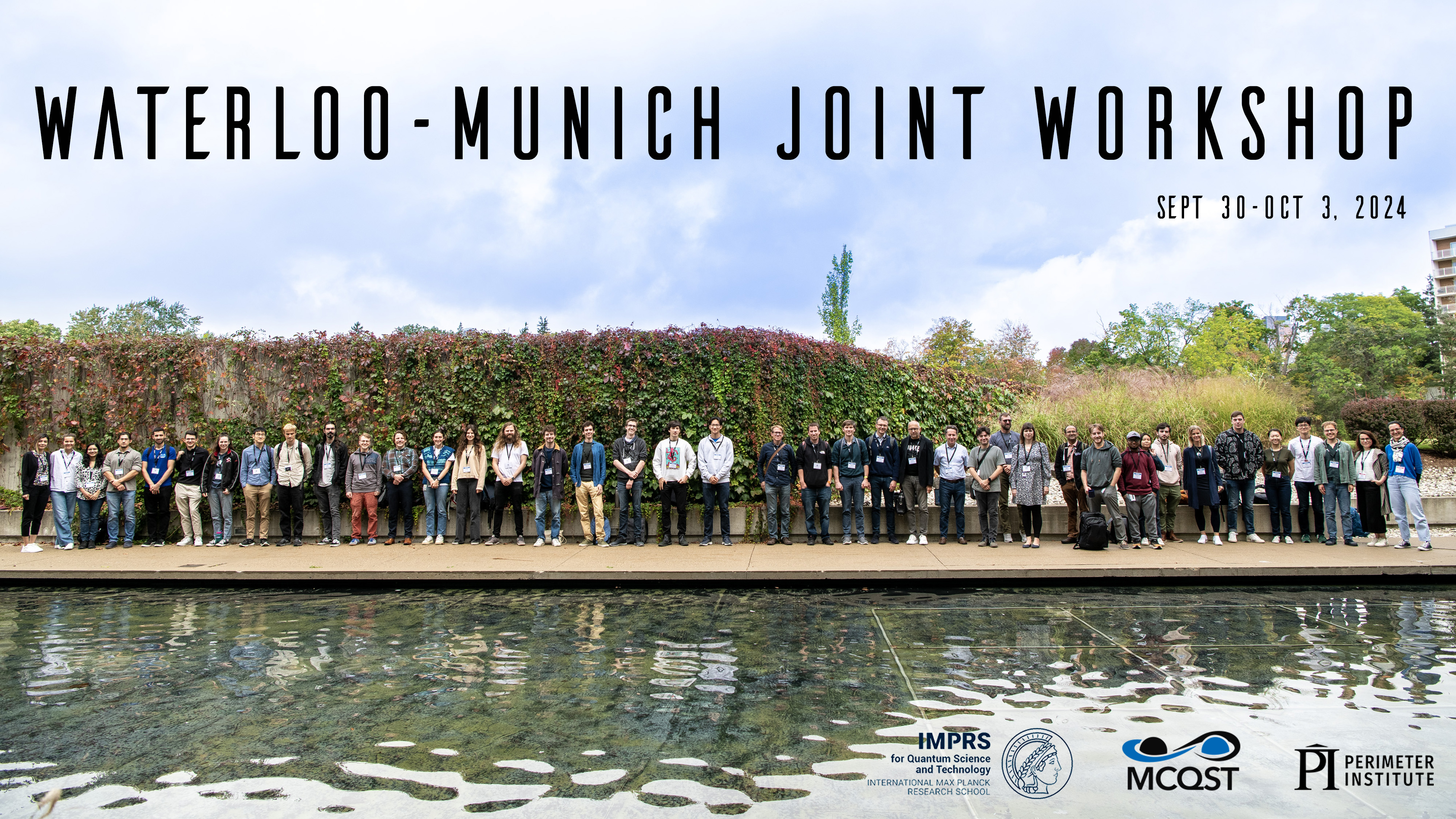
Join us for a pioneering joint workshop between renowned research institutions in Munich and Waterloo! This exciting event will focus on the topic of quantum simulation, with additional talks delving into various subjects of quantum science and technology. Designed to include researchers across different levels, from group leaders, postdoctoral fellows, and PhD students, this inaugural collaboration aims to unite scientists from both locations, fostering valuable networking opportunities and promoting interdisciplinary collaboration. Don't miss this extraordinary opportunity to connect, exchange ideas, and shape the future of quantum research together!

-
Causalworlds
Understanding causality is fundamental to science and inspires wide-ranging applications, yet there are several distinct notions of causation. Recently, there have been important developments on the role of causality in quantum physics, relativistic physics and their interplay. These have unearthed a plethora of fascinating open questions regarding the nature of causation, emergence of space-time structure and the limits of quantum information processing. At the same time, causal reasoning has become an important tool in machine learning and statistics, with applications ranging from big data to healthcare. This conference brings together experts from different areas of physics working on questions related to causality, as well as selected researchers who bridge the gap between fundamental research and current industrial applications. The aim of the conference is to provide a venue for cross-pollination of these ideas through scientific exchange between these communities. The conference will focus on the following facets of causality:
• Quantum and classical causal inference
• Indefinite causal order and quantum reference frames
• Causality in quantum field theory and quantum gravity
• Experiments and applications of causality

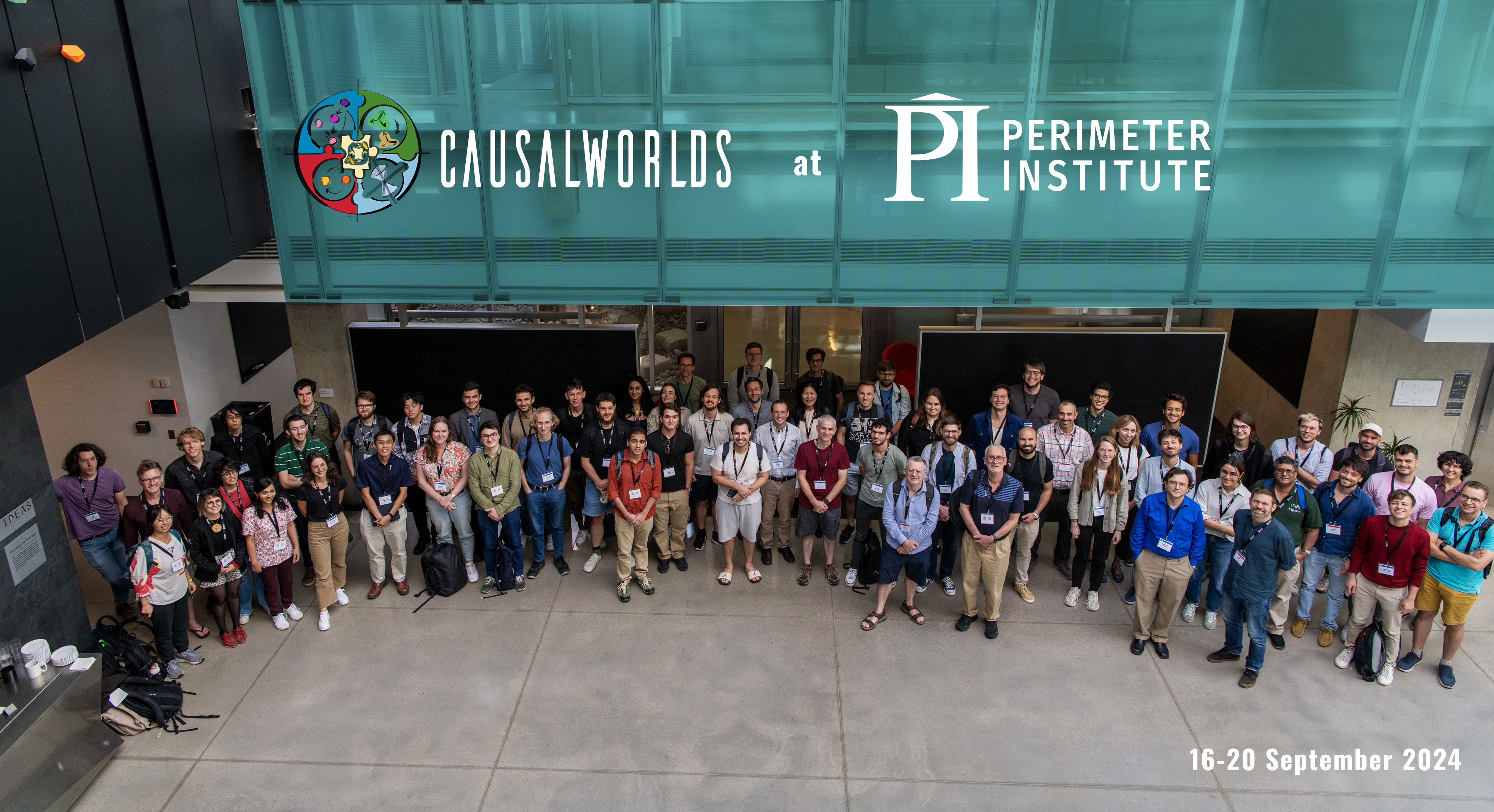
:: :: ::
Important dates
Paper submission deadline: 24 May 2024 // 31 May 2024
Paper notification: 3 July 2024Registration deadline (with application for financial assistance): 18 July 2024
Registration deadline: 28 August 2024
Conference: 16-20 September 2024Update: The submission deadline has been extended to 31st May 2024 for
papers which clearly justify their relevance for the following three
topics:1) classical causal inference,2) causality in relativistic physics (including quantum field theory and quantum gravity) and3) experiments in causality.As we have received a sufficiently high number of submissions on the remaining topics (particularly indefinite causality and quantum causal models), the original deadline of 24th May still holds for submissions in this category.:: :: ::
Call for Abstracts
Prospective speakers can submit a paper for a contributed talk (in person or online) and/or a poster (in person only) via the Call for Abstracts. The Call for Abstracts is now open! Submissions for a talk will automatically be considered for a poster if not accepted for a talk.:: :: ::
Invited Speakers
Jessica Bavaresco (University of Geneva)
Cyril Branciard (CNRS, University Grenoble Alpes)
Rafael Chaves (Federal University of Rio Grande do Norte)
Giulio Chiribella (The University of Hong Kong)
Doreen Fraser (University of Waterloo)
Anne-Catherine de la Hamette (IQOQI Vienna)
Ciarán Lee (Spotify)
Tein van der Lugt (University of Oxford)
Joris M. Mooij (University of Amsterdam)
Mio Murao (University of Tokyo)
Alejandro Pozas-Kerstjens (University of Geneva)
Huw Price (Trinity College, Cambridge)
Renato Renner (ETH Zürich)
Thomas Richardson (University of Washington)
Sally Shrapnel (The University of Queensland)
Sumati Surya (Raman Research Institute)
Rainer Verch (University of Leipzig)
:: :: ::
Programme Committee
V Vilasini (ETH Zürich & Inria, University Grenoble Alpes) (PC Chair)
Augustin Vanrietvelde (Télécom Paris) (PC Co-chair)
Alastair Abbott (Inria, University Grenoble Alpes)
Časlav Brukner (IQOQI Vienna & University of Vienna)
Eric Cavalcanti (Griffith University)
Chris Fewster (University of York)
Lucien Hardy (Perimeter Institute)
Hlér Kristjánsson (Perimeter Institute & IQC & Université de Montréal)
Giulia Rubino (University of Bristol)
Nitica Sakharwade (Università degli Studi di Napoli Federico II)
Robert Spekkens (Perimeter Institute)
Jacopo Surace (Perimeter Institute)
Elie Wolfe (Perimeter Institute)
Lin-Qing Chen (ETH Zürich & IQOQI Vienna)
Hippolyte Dourdent (ICFO Barcelona)
Tamal Guha (University of Hong Kong)
Robin Lorenz (Quantinuum, Oxford)
Maria Papageorgiou (IQOQI Vienna)
Nicola Pinzani (Université libre de Bruxelles)
Marco-Túlio Quintino (Sorbonne Université, Paris)
Marc-Olivier Renou (Inria Paris-Saclay & CPHT, École polytechnique)
David Schmid (ICTQT, University of Gdańsk)
John Selby (ICTQT, University of Gdańsk)
Akihito Soeda (National Institute of Informatics, Tokyo)
Matthew Wilson (University College London)
:: :: ::
Scientific Organizers
Hlér Kristjánsson (Perimeter Institute & IQC & Université de Montréal) (Chair)
V Vilasini (ETH Zürich & Inria, University Grenoble Alpes)
Robert Spekkens (Perimeter Institute)
Lucien Hardy (Perimeter Institute)
Elie Wolfe (Perimeter Institute)
Jacopo Surace (Perimeter Institute)
Marina Maciel Ansanelli (Perimeter Institute)
Yìlè Yīng (Perimeter Institute)
María Ciudad Alañón (Perimeter Institute)
Daniel Centeno Díaz (Perimeter Institute)
Khushi Gandhi (Perimeter Institute & University of Waterloo):: :: ::
Previous editions:
Causalworlds 2022: The interface between quantum and relativistic causality, foundations and practicalities
Organised at ETH Zürich in 2022. Website: https://causalworlds.ethz.ch/" -
Perimeter Institute Graduate Students' Conference 2024

The annual Graduate Students’ Conference showcases the diverse research directions at Perimeter Institute, both organized and presented by the students. Our graduate students are invited to share their best work with their fellow PhD students, PSI students and other PI residents interested in hearing about physics research and discussing it in a lively atmosphere full of questions.
PSI students are welcome to join as audience members on Friday, Sept 13 and to present a Lightning Talk if they wish to do so.
-
Celestial Holography Summer School 2024
Perimeter Institute is happy to host the inaugural summer school for the Simons Collaboration on Celestial Holography July 22-26 in Waterloo, ON. The program will feature lectures on background material relevant for graduate students and postdocs interested in this emerging subfield, paired with vision talks on exciting future research directions.
:: :: ::
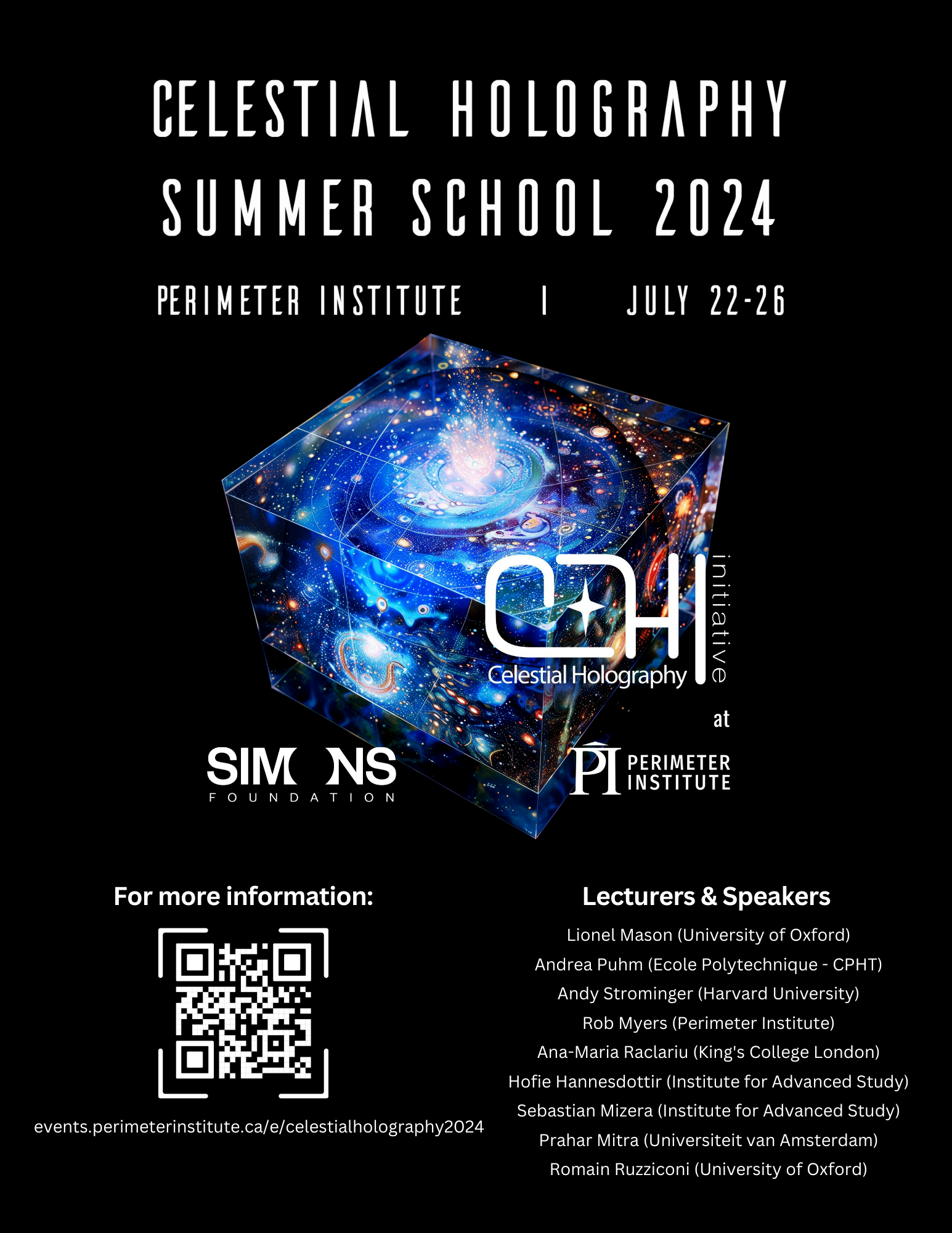
-
50 Years of Horndeski Gravity: Exploring Modified Gravity

Recent years have seen a flood of new data, from gravitational wave observations of merging black holes and neutron stars to precision probes of cosmology, which allow for unprecedented tests of our understanding of gravity. Going hand-in-hand with this, there has been significant recent progress on the theoretical side in terms of formulating modified theories of gravity, and using them to make detailed predictions, including in the nonlinear and dynamical regime, which can be confronted with the observations.
We are excited to announce a landmark conference that plans to delve into the forefront of research on modified theories of gravity and brings together leading experts from different disciplines including observational astrophysicists, numerical relativists, cosmologists and mathematical physicists to explore the present status of modified theories of gravity and envision their future theoretical development and implications for observations.
This conference is also timed to coincide with the 50th anniversary of pioneering work in this area carried out by Gregory Horndeski in the Waterloo Mathematical Physics Community. Hosted jointly by Perimeter Institute and the University of Waterloo, this conference will serve as a forum for researchers from different disciplines to exchange ideas at the cutting
edge of gravitational physics.
Presented by:

Sponsored in part by Gravity Theory Trust
:: :: ::Topics:
• Modified Gravity Theories: Theoretical Framework and Models
• Tests of modified Gravity with Gravitational Waves (LIGO/LISA/PTA)
• Astrophysical/cosmological tests of gravity
• Mathematical structure of Modified gravity
• Observational tests of quantum gravity
• Modified gravity in the early universeConference Structure:
The conference will feature a balanced blend of plenary sessions (invited Speakers), contributed talks, panel discussions and poster presentations for students.
• Keynote presentations by renowned physicists in the field, discussing the impact of Horndeski theories and other modified theories of gravity on cosmology, dark energy, and black hole physics.
• Contributed talks: prioritizing early-career researchers
• Panel discussions on emerging research directions, unresolved questions, and potential applications of Horndeski theories.
• Poster sessions for early-career researchers and graduate students to showcase their work and receive feedback from senior scientists.:: :: ::
Scientific Organizers:
- Ghazal Geshnizjani (Perimeter Institute, SOC Chair)
- William East (Perimeter Institute)
- Levon Pogosian (Simon Fraser University, Perimeter Institute Affiliate)
- Niayesh Afshordi (Perimeter Institute, U Waterloo, LOC Chair)
- Will Percival (Perimeter Institute, U Waterloo)
- Florian Girelli (U Waterloo, Perimeter Institute Affiliate)
- Jerome Quintin (U Waterloo, Perimeter Institute)
- Alex Krolewski (U Waterloo, Perimeter Institute, CITA)
:: :: ::
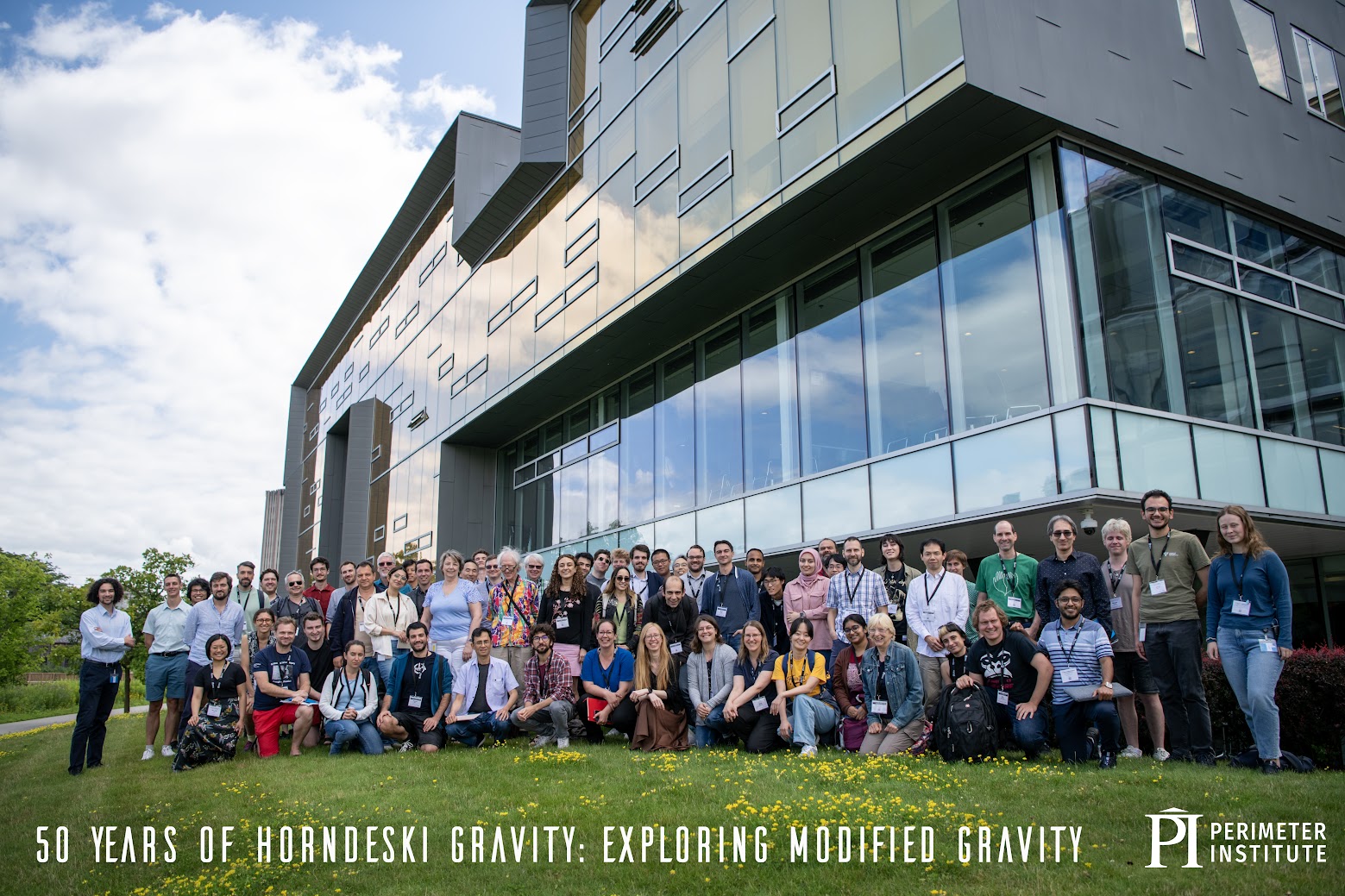
-
PSI 15th Anniversary Reunion
PSIons celebrate 15 years of Perimeter Scholars International with the first ever PSI reunion event!
Join us for 3 days that include:
- 3 former PSI Keynote Speakers in Industry
- 3 former PSI Speakers in Academia
- A chance to win 1 of 7 Grants of up to 5000 CAD each for a PSI class project to be developed and presented at the reunion (see Call for Projects for details)
- Social events with your cohorts and PSI special guests
- Lots of time to connect with classmates and PSIons, while immersing yourself in Perimeter’s lively research and collaboration environment.
_______________________________________________________
The Perimeter Scholars International (PSI) Master's program is offered in collaboration by Perimeter Institute and the University of Waterloo.
-
Physics of Quantum Information
The dialogue between quantum information and quantum matter has fostered notable progress in both fields. Quantum information science has revolutionized our understanding of the structure of quantum many-body systems and novel forms of out-of-equilibrium quantum dynamics. The advances of quantum matter have provided novel paradigms and platforms for quantum information processing.
This conference aims to bring together leading experts at the intersections of quantum information and quantum matter. Key topics include: (i) quantum error correction, (ii) quantum dynamics, and (iii) quantum simulation.Organizers:
Timothy Hsieh, Perimeter Institute
Beni Yoshida, Perimeter Institute
Zhi Li, Perimeter Institute
Tsung-Cheng Lu, Perimeter Institute
Meenu Kumari, National Research Council Canada:: :: ::
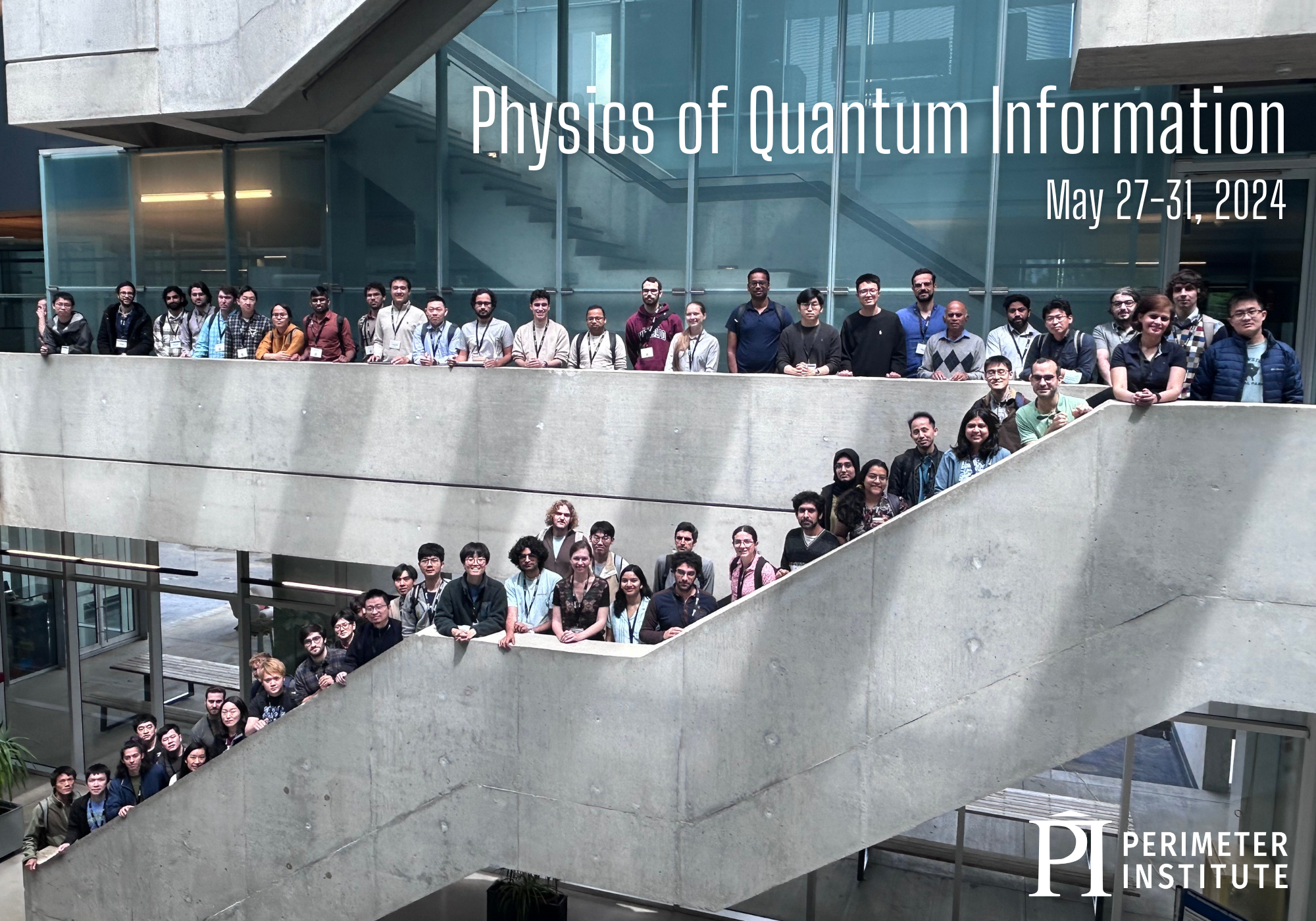
-
Navigating Quantum and AI Career Trajectories: A Beginner’s Mini-Course on Computational Methods and their Applications
The dynamic field of quantum physics and artificial intelligence is expanding across both academic and industrial landscapes. This mini-course offers an introduction to computational techniques currently utilized in the quantum sector, highlighting non-academic career paths for individuals interested in quantum physics and machine learning. The program features two lecture series: one on generative modeling - covering topics (such as restricted Boltzmann machines, recurrent neural networks, and transformers) - and the other on quantum machine learning algorithms. Participants will also benefit from practical coding tutorials, networking opportunities, and related events about the landscape of Quantum and AI.
Land Acknowledgement
In the spirit of understanding and learning from what has come before, Perimeter Institute respectfully acknowledges that we are located on the traditional territory of the Attawandaron, Anishnaabeg, and Haudenosaunee peoples.
Perimeter is situated on the Haldimand Tract, land promised to Six Nations, which includes six miles on each side of the Grand River. As settlers, we thank all the generations of people who have taken care of this land for thousands of years. We are connected to our collective commitment to make the promise and the challenge of Truth and Reconciliation real in our communities. -
SciComm Collider 2
The second annual SciComm Collider workshop will bring together a group of the most innovative science communicators helping to connect the public with topics in physics and astronomy for a three-day workshop aimed at sharing ideas, creating new collaborations, and exploring ways to more effectively engage the public with the most exciting ideas in science. The workshop will consist of short seminars, interactive sessions, and opportunities to brainstorm new ideas with fellow communicators and creators, as well as venues for interaction between invited science communicators and Perimeter outreach/communications team members and researchers.
-
Foundations of Quantum Computational Advantage
The workshop marks the halfway point of the similarly named (FoQaCiA, pronounced "focaccia") collaboration between researchers in Canada and Europe, funded as part of a flagship partnership between NSERC and Horizon Europe.
https://www.foqacia.org/
The goal of FoQaCiA is to develop new foundational approaches to shed light on the relative computational power of quantum devices and classical computers, helping to find the "line in the sand" separating tasks admitting a quantum speedup from those that are classically simulable.
The workshop will focus on the four central interrelated themes of the project:
1. Quantum contextuality, non-classicality, and quantum advantage
2. The complexity of classical simulation of quantum computation
3. The arithmetic of quantum circuits
4. The efficiency of fault-tolerant quantum computation
Our view is that the future success of quantum computing critically depends on advances at the most fundamental level, and that large-scale investments in quantum implementations will only pay off if they can draw on additional foundational insights and ideas
:: :: ::
Scientific Organizers:
Rui Soares Barbosa (INL - International Iberian Nanotechnology Laboratory)
Anne Broadbent (University of Ottawa)
Ernesto Galvão (INL - International Iberian Nanotechnology Laboratory)
Rob Spekkens (Perimeter Institute)
Jon Yard (Perimeter Institute):: :: ::
FoQaCiA is funded by:


-
Higher Categorical Tools for Quantum Phases of Matter
Quantum phases have become a staple of modern physics, thanks to their appearance in fields as diverse as condensed matter physics, quantum field theory, quantum information processing, and topology. The description of quantum phases of matter requires novel mathematical tools that lie beyond the old symmetry breaking perspective on phases. Techniques from topological field theory, homotopy theory, and (higher) category theory show great potential for advancing our understanding of the characterization and classification of quantum phases. The goal of this workshop is to bring together experts from across mathematics and physics to discuss recent breakthroughs in these mathematical tools and their application to physical problems.
Scientific Organizers
Lukas Mueller
Alex Turzillo
Davide Gaiotto
Sponsored in part by the Simons Collaboration on Global Categorical Symmetries
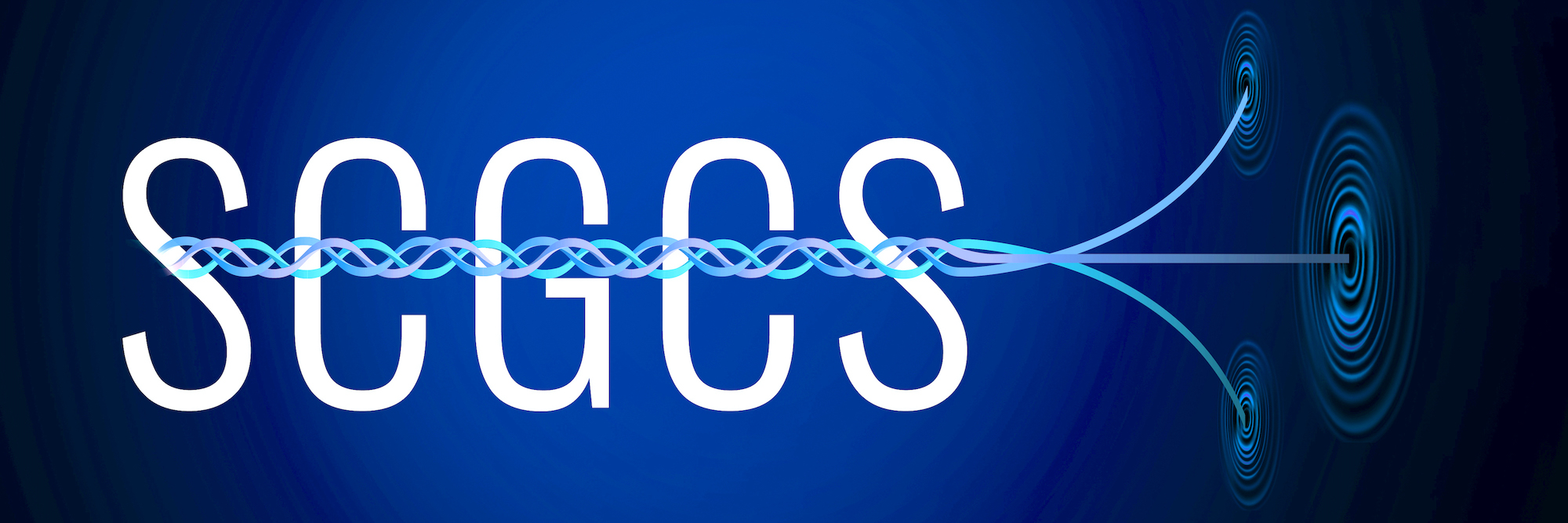
-
Dark Matter, First Light
New observational programs and techniques are opening a window to the first galaxies in the universe and bringing surprises along the way. In this workshop, we'll explore how dark matter phenomenology may have impacted the first stars and galaxies, focusing on how improved modeling and simulations can allow us to use new and upcoming high-redshift data to gain insight into dark matter's fundamental nature.
Sponsored in part by:

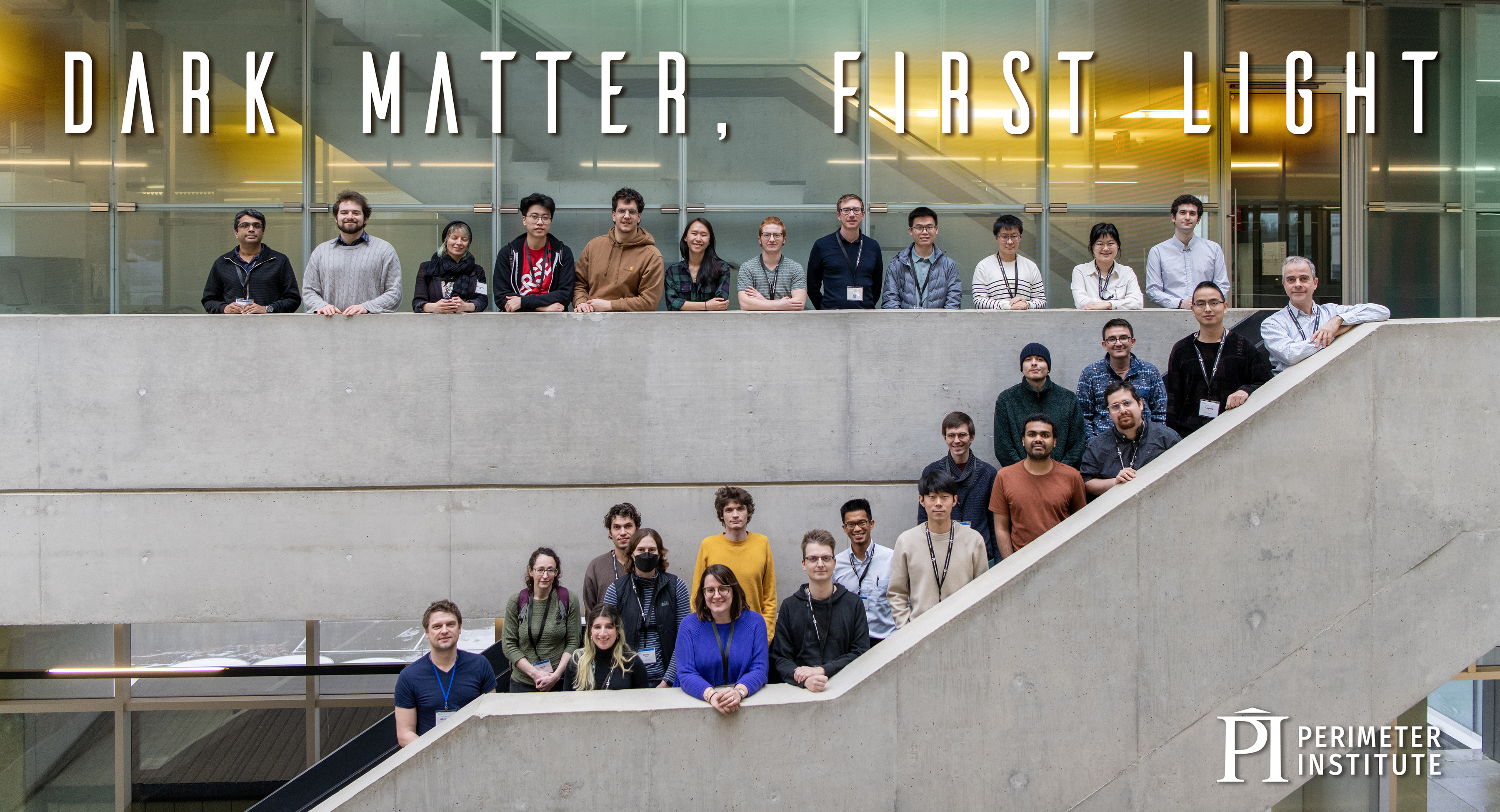


.png)
